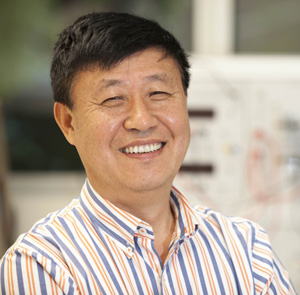The PeCOD Analyzer: A simple rapid and green revolution saving companies millions each year
A Griffith University research team has revolutionised the technology for water quality assessment with the development of PeCOD®, a photoelectrochemical apparatus for measuring water’s chemical oxygen demand (COD).
COD measurement is typically used to monitor and control organic pollutants in domestic and industrial wastewaters, and has been used worldwide for decades to assess water quality. The downsides of the standard COD method are that it is time-consuming and labour-intensive, involves complex procedures, and uses toxic and hazardous reagents.
PeCOD®, invented by professors Huijun Zhao and Shanqing Zhang from Griffith’s Centre for Catalysis and Clean Energy, is based on a titanium dioxide nanoparticulate semiconductive photoelectrode, capable of online continuous monitoring of COD in a simple, rapid and accurate fashion, without using harmful chemicals. It can complete a COD assay within a few minutes, rather than hours.
The PeCOD® technology is now owned by Canadian company MANTECH, which manufactures equipment for water and soil analyses in laboratory, industrial process and field environments, and has proved versatile with applications across many industries, from pulp and paper manufacturing to craft beer brewing.
Based on the company’s client testimonials, the use of the PeCOD® Analyzer could save a multinational paper company an estimated AUD $3 million a year; not accounting for the added health and safety benefits to its staff, the local community, and the environment.
PeCOD® is currently subject to further research and development in North America and Scandinavia. It is being tested by water utilities in some US states as the PeCOD® Analyzer is a proven alternative to regular water monitoring. The Analyzer also has applications for safely testing treated drinking water, which can react to the natural organic matter found in all rivers, lakes and reservoirs.

Professor Huijun Zhao
Director of the Centre for Catalysis and Clean Environment and Energy.
